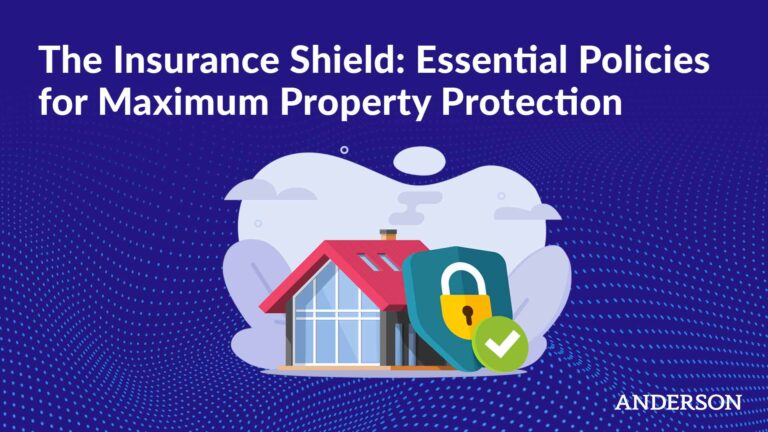
For businesses and investors who hold real estate properties, 1031 exchanges present an effective financial strategy. They can use this tax-deferred transaction to realize several benefits, such as acquiring higher-value properties, diversifying their real estate portfolio, and establishing cash flows through revenue-generating real estate. If you want to leverage 1031 exchanges for your benefit, it is important to understand the rules governing them and how they work.
Key Takeaways:
- A 1031 exchange is a transaction where you sell one investment property and reinvest the capital gains into another investment property of a similar type or character.
- Conducting a 1031 exchange allows you to defer paying capital gains tax.
- You cannot use a 1031 exchange for your primary residence.
- There are rules governing 1031 exchanges. For example, you must obtain the new investment property within 180 days, and overseas properties do not qualify for exchange.
- For exchanges involving more than two parties, you must use an impartial third party called a qualified intermediary to manage the transaction and preserve its tax-deferred status.
- Several fees may be associated with 1031 exchanges, including payment to the qualified intermediary, per-property fees, and closing costs.
Tax & Asset Protection Workshop
Learn about Real Estate & Asset Protection at our next
FREE LIVE STREAM
What Is a 1031 Tax-Deferred Exchange?
A 1031 tax-deferred exchange, more commonly known as a 1031 exchange, is a type of real estate transaction and tax strategy that involves swapping one investment property (a relinquished property) for another (a replacement property) without paying tax on the profit. The entity behind the exchange, known as the exchangor, can be a business or an individual investor.
Its name comes from Section 1031 of the United States Internal Revenue Code. Normally, you would owe tax on the gain from selling a business or investment property. However, Section 1031 lets you postpone the tax payment if you reinvest the sale proceeds in a similar property within a particular time frame.
This kind of transaction is known as a like-kind exchange, referring to the sameness of property type. Generally, all real properties in the U.S., excluding one’s primary residence, qualify as like-kind, regardless of their quality or improvement status.
The Rules of 1031 Exchanges
Below are the primary rules that govern 1031 exchanges:
- Time frame: From the time of sale of the relinquished property, the exchangor has 45 days to identify potential replacement properties and 180 days to close the sale of a replacement property. The 180 days, by the way, is also from the time of sale of the relinquished property, so the total overall time frame is 180 days, not 225.
- Identification: The exchangor must provide clear descriptions of the targets when identifying potential replacement properties.
- Like-kind properties: As stated above, all real estate used as investment properties (sans one’s residence) are like-kind as long as they are in the U.S. The same cannot be said of properties outside of the country. You cannot defer paying tax on a capital gain if you sell a property on American soil and use the proceeds to buy a property in a foreign nation.
- Property value: The replacement property must be of equal or greater value than the relinquished property. Otherwise, the exchangor could pocket the difference.
Who Handles 1031 Exchanges?
Per the Internal Revenue Code, a qualified intermediary must manage any 1031 exchange involving three or more parties (e.g., the exchangor, the buyer of the relinquished property, and the replacement property seller). The qualified intermediary must be an impartial third party who cannot be considered the exchangor’s agent. This term refers to anyone who has operated in any of the following roles in relation to the exchangor within two years of the transaction:
- Accountant.
- Attorney.
- Broker.
- Employee.
- Investment banker.
- Real estate agent or broker.
One of the key functions of the qualified intermediary is facilitating the property exchange. They do so by preparing the agreements for structuring the transaction and verifying that it complies with the rules set forth by the Internal Revenue Service.
An additional and critical function of the qualified intermediary is to preserve the tax-deferred status of the money gained from the relinquished property. They do this by holding and safeguarding the funds until the close of the sale of the replacement property. Should the exchangor handle the funds at any point, it may result in the disqualification of the transaction, compelling them to pay the tax they had meant to defer.
How Do 1031 Exchanges Work?
A business or real estate investor conducts the following procedure to conduct a 1031 exchange:
1. Choose a Qualified Intermediary
When choosing a qualified intermediary, the exchangor should consider the candidate’s expertise, fees, accessibility, and method of holding the exchange funds. Exchangors can find potentially qualified intermediaries through the Federation of Exchange Accommodators, an organization that represents professionals who facilitate like-kind exchanges. As members must undergo criminal background checks and adhere to the FEA Code of Ethics and Conduct, interested exchangors can be confident about the trustworthiness of candidates they find in the organization’s directory.
2. Sell the Relinquishable Property
With a qualified intermediary in place to receive the funds, the exchangor can now sell the property they wish to relinquish. At the point of sale, their window of opportunity for closing on a replacement property begins to close.
3. Identify Potential Replacement Properties
The next step is to find and document the potential properties the exchangor may use to complete the 1031 exchange. As mentioned, they have just 45 days to identify and describe these properties in writing. The exchangor then signs the identifying documents and delivers them to a party involved in the exchange, such as the qualified intermediary or the sellers of the replacement properties.
4. Close on the Replacement Property
Within 180 days of the sale of the relinquished property, the exchangor must complete their purchase of the identified replacement property. This involves collaborating with the qualified intermediary to transfer the held funds to the seller.
5. Complete and File Form 8824
Form 8824 is used to report like-kind property exchanges to the IRS. It consists of three parts that are to be completed by the exchangor. In part I, they must provide details about the exchange, such as descriptions of the properties involved in the transaction; part II relates to information about the qualified intermediary; and part III is for figuring out the basis of the property one has received.
How Much Does a 1031 Exchange Cost?
The cost of a 1031 exchange can vary wildly, with common estimates ranging from $600 to over $2,000. The specific cost may vary depending on variables such as the following:
- Qualified intermediary fees: As the transaction facilitator, the qualified intermediary earns a fair share of the overall costs associated with a 1031 exchange. You might expect to pay $600 to $1,200 for their services alone, but these figures typically cover set-up and administrative fees as well.
- Per-property fees: When multiple properties are involved in the exchange, each additional property may incur a fee ranging from $300 to $500.
- Closing costs: Some common closing costs in commercial real estate relate to appraisals, brokers, attorneys, inspections, and escrow.
If you are a real estate flipper or investor interested in leveraging 1031 exchanges, we encourage you to get in touch with Anderson Advisors. We can help you navigate the transaction’s rules, costs, and intricacies to overcome the process’s challenges successfully. Schedule your strategy session today to realize the benefits.
Also do not forget about the upcoming Corporate Transparency Act Compliance – take our Quiz now to see if you are required by law.
Free Strategy Session with an Anderson Advisor
Receive a detailed risk assessment to assist in lowering problem areas that could wipe out all of your assets with one wrong move. Speak with an Anderson Professional Advisor to get your FREE Strategy Session.
Limited-Time Offer: ($750 value.)











